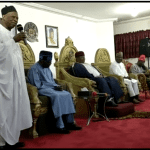Iran’s election to replace the late President Raisi has set off a race among hardliners to influence the next supreme leader’s ascension, with the goal of electing a Khamenei-aligned president.
Raisi, who was once regarded as a potential successor to Ayatollah Ali Khamenei, Iran’s aging supreme decision-maker, died unexpectedly in a helicopter crash, sparking a race among hardliners to influence the next leader’s appointment.
Khamenei, 85, is looking for a fiercely loyal president in the June 28 election to administer the country on a daily basis and be a trusted partner who can assure stability, while also negotiating the ultimate succession to his own position, according to observers.
“The next president is likely to be a hardliner unwaveringly loyal to Khamenei with a background in the Revolutionary Guards. Someone with an unblemished background and devoid of political rivalries,” said Tehran-based analyst Saeed Leylaz.
Candidates can register on Thursday, but that is only the start of a process that will see them examined by the Guardian Council, a conservative watchdog organization that disqualifies candidates without always disclosing why.
Three people familiar with the Iranian establishment’s views claimed the leadership has discussed the benefits of alternative approaches to the presidential campaign.
That goal — victory for a hardline president able to shape a smooth transition at the pinnacle of power when Khamenei eventually dies — nevertheless presents a conundrum for the ruling clerics managing the vote next month.
To ensure the winner is a diehard Khamenei loyalist, it is likely the upcoming election will be dominated by hardliners with outlooks similar to his, the insiders and analysts say.














